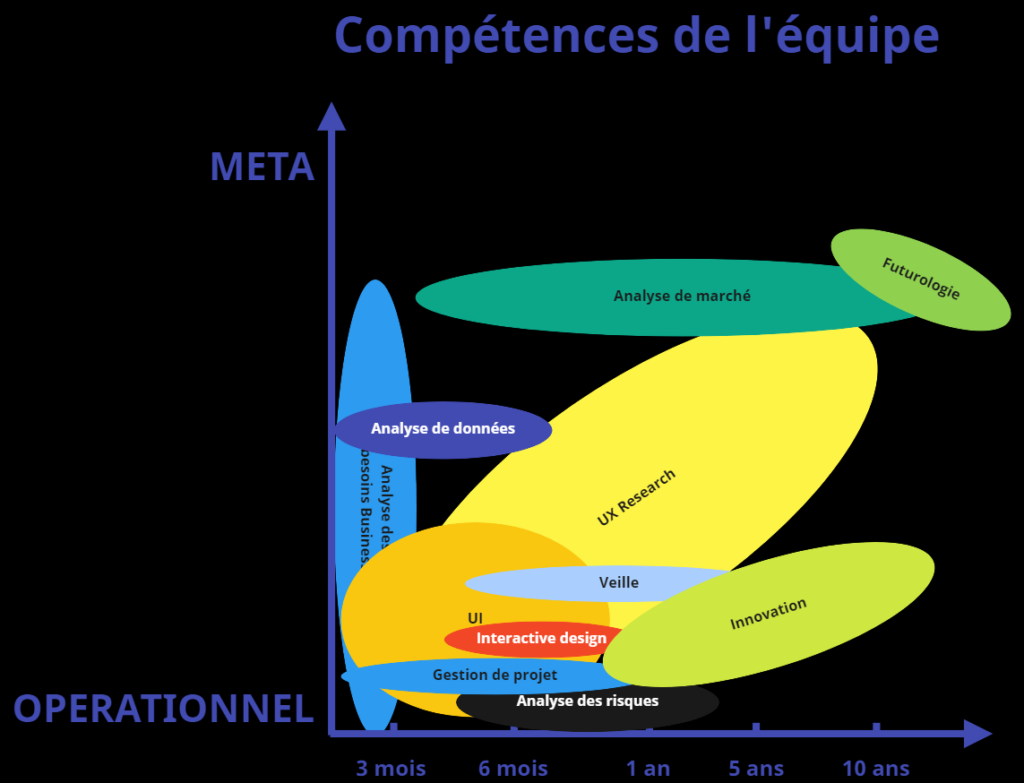How do you visualize and define the skills of your team, how do you identify gaps between actual skills and needed skills, how do you support your team to fill the gaps?
How do you determine the skills that they express on a business as usual basis and the ones that needs to be developed.
How do you determine the skills that are useful for your team’s job and the one that are not directly linked to your job.
How do you find the skills that cannot be enhanced, because they are more related to the “who is in your team” and much more linked to their education, social environment, linked to the way they think and the ones that are easy to learn, that you can teach where education programs exists already and where it’s just a matter of time spend in training.
Never underestimate the willingness of people to learn or to change in general.
No one ever want to change anything by themself, people are changing most of the time because of an external factor that nobody can trigger, so let’s consider this “external factor” has out of sight and unreachable.
Also the concept of energy equilibrium is important to understand.
Nothing can change without energy.
The energy amount you have to put to reach a new equilibrium may be very high for some and very low for others.
When you are at an equilibrium you are in your safe, comfort zone.
Nobody wants to move from one comfort zone, especially when they don’t know what the next position will be stable or not, will be sustainable or not and certainly the fear, learning then growth zone one will have to transition through is a long journey.

Draw an hard skills diagram of team skills
First, let’s consider an “work Item” (Kanban). Let your team decide what it would be. It could be a user story, a benchmark study.
Then try to imagine this work item lifecycle identify pre-state and post-state. Maybe some pre-state are linked to other work items from other teams or others members of your team.
TIP: It’s easier to understand if you think about it as a house construction. With the architects that build the plan but also the construction team that will follow the plan to build the house and afterward the house maintenance… just try to think about your team as a construction team and see what’s before a hand and after hand.
I choose to focus on two aspects:
- First axe: “Palpable” and “not palpable”, practical and conceptual or operational and meta-cognitive. Choose the axes you prefer, but the idea is to compare something that anyone can figure out and manipulate against something that is about concepts, ideas, tendencies, strategies …
- The second axe is the time range of the item: is it short term (days, weeks or few months) or is it long term (several months, years …)
The idea is to visualize the skills with your team as you draw potato shaped area one skill at a time.
With my current team, we are more focused on product strategic and Epics (Scrum) creations.
So it looks like this

Ask people where they are and what gaps are identified, sometimes it’s gaps in the term, for instance if no one is focusing on 1 – 5 years innovation you have a gap.
Putting stickers with team members head or initials all over the map will help you identify where the gaps are.
We used a logarithmic time scale because it makes more sens.
It’s also important to allow you to broaden the terms or life expectancy of the work item to work item range.
For instance market analysis don’t take 10 years, but is focused on 3, 5 10 years perspective but could be done in one day. So for meta items the “term” is more linked to the range of the concept. While at the same time the UI is designed very close from the product creation because it needs to (last icons, last thematic, last visual identity, last branding …).
If we were also an operational team, the graphic would have crossed the “operational, conceptual” vertical axes for bugs fixing, and becomes after product launch maintenance. The parallel with the house building would be house maintenance, electric, fuel, water checks, periodic fire checks but could also be cleaning … depending on your teams mission of course.
So what’s next?
After identifying the gaps, it now time to take 1 or 2 actions to remedy or refocus. Indeed it could be addressed two ways: do it better or stop doing it.
It’s really important to discuss this as other company teams may be more focused on some specific field where you are teams skills.
Then invite people responsible for company skills follow up to discuss this and help you close the gaps.
Also bring in other teams representatives (leader or not) that will really gives you an opportunity to discuss scopes and perimeters of every team.
Gaps on one side are maybe fulfilled on other side.
Also considering what people think they should do versus what they actually do could be interesting. Then for everyone initials, choose two colors and you will see where they want to go. A path of learning … and a path for your team to evolve.
Write everything in an OKR form and discuss the term 3 – 6 – 12 months to reach them.
Then … it’s up to your team to take them and pursue the path.
This kind of exercise could be done every few years. But certainly when the teams mission evolve or change in some way or when new team members gets in.
Remarks and comments are welcome!